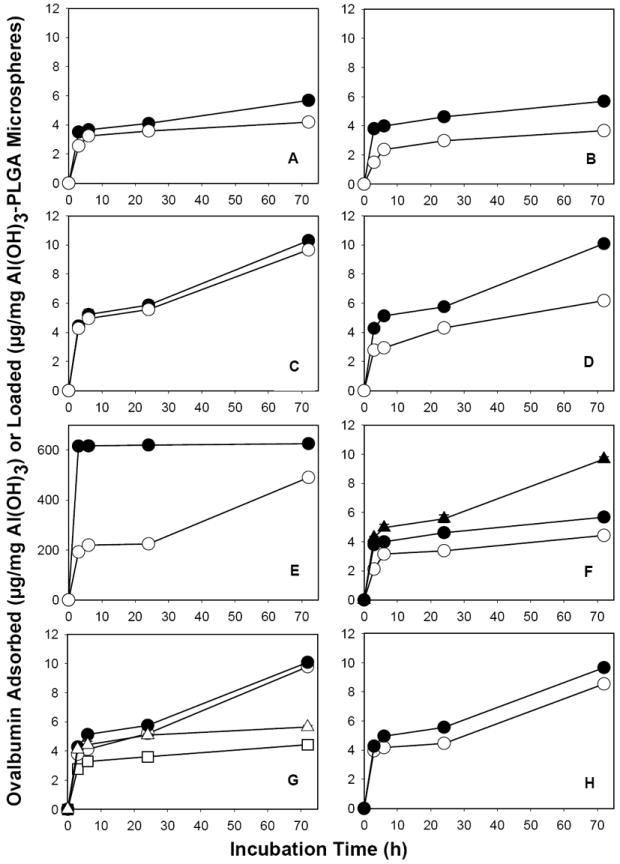Fig. 3.

Optimization of active self-microencapsulating (SM) PLGA microsphere formulation variables and antigen loading temperature (ASM-2 to ASM-16, Table 1). Ovalbumin (OVA) sorption by unencapsulated Al(OH)3 control (E: μg OVA/mg Al(OH)3) or active SM PLGA microspheres (A-D and F-H: μg OVA/mg Al(OH)3-PLGA microspheres) as a function of incubation time. Effect of the following variables on OVA sorption: inner water phase volume (A: 0.2 (●) or 0.3 (○) mL inner Al(OH)3/trehalose phase-to-1 mL oil phase ratio), microspheres size (B: 20-63 (●) and 63-90 (○) μm), PLGA concentration (C: 250 (●) and 350 (○) mg/mL), adjuvant type (D and E: Al(OH)3 (●) or CaHPO4 (○) after (D) or before (E) PLGA encapsulation, Al(OH)3 loading (F: 0.88 (○), 1.85 (●), and 3.04 (▲) wt%), trehalose loading (G: 0 (□), 2.5 (○), 4 (●), and 10.4 (Δ) wt%), and initial loading temperature (H: 10 (○) and 25 (●) °C). A: ASM-2 and ASM-3; B: ASM-4 and ASM-5; C: ASM-6 and ASM-7; D: ASM-8 and ASM-9; F: ASM-10 to ASM-12; G: ASM-13 to ASM-16; and H: ASM-8. Mass of unencapsulated Al(OH)3 and microspheres (20-63 μm in size) used in the study was ~0.6 and 20 mg, respectively. All the samples were incubated with 0.4 mL of 1 mg/mL OVA in 10 mM MOPS buffer (pH 7.4) under mild agitation at 25 and 42 °C respectively for 24 and 48 h. Symbols represent mean ± SEM, n = 3.
